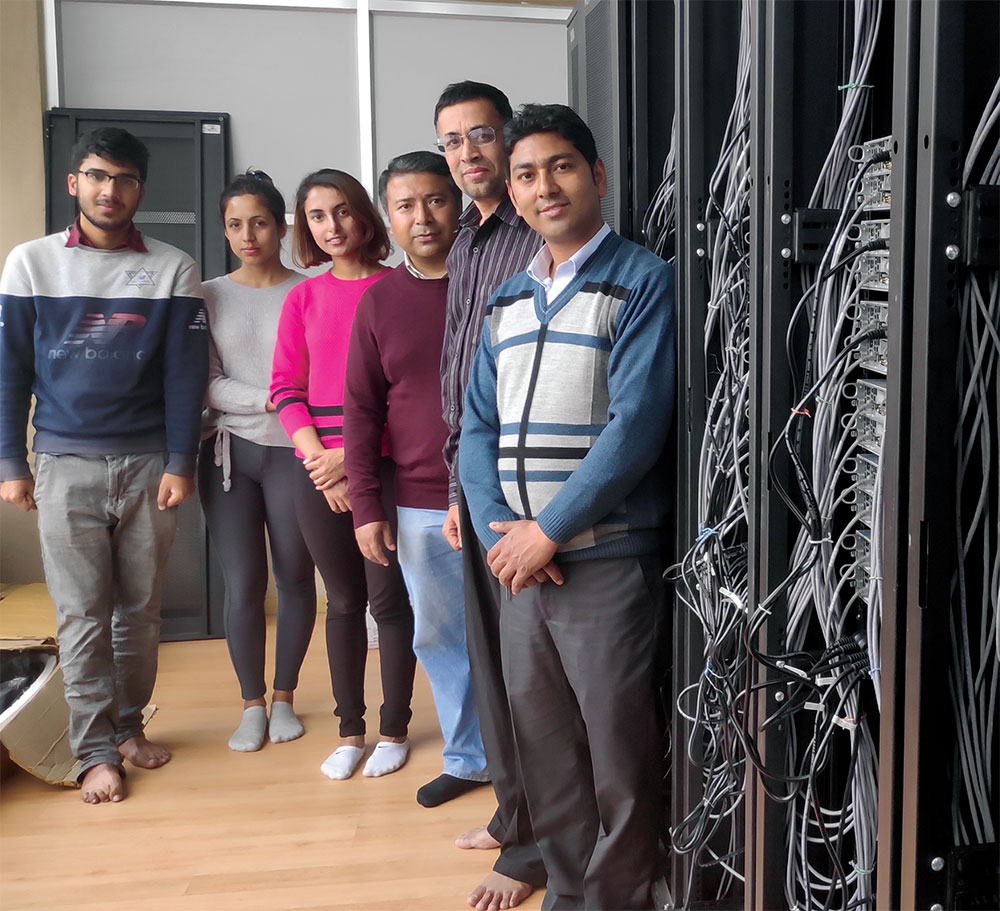
Racking up: The HPC Nepal team in the new computing centre. (Image: D. Bista).
In the heart of Beirut, in a five-storey house owned by the Lebanese national telecommunications company, floors are about to be coated to make them anti-static, walls and ceilings will be insulated, and cabling systems installed so wires don't become entangled. These and other adjustments will be completed by mid-2020, when approximately 3000 processor cores, donated by CERN, will arrive.
The High-Performance Computing for Lebanon (HPC4L) project is part of efforts by Lebanese scientists to boost the nation's research capabilities. Like many other countries that have been torn by conflict and have seen their highly-skilled graduates leave to seek better opportunities elsewhere, Lebanon is trying to stem its brain drain. Though the new facility will not be the only HPC centre in the country, it is different because it involves both public and private institutions and has the full support of the government. "There are a few small- scale HPC facilities in various universities, but they suffer from being isolated and are therefore quickly outdated and under-used," says physicist Haitham Zaraket of Lebanese University in Beirut. "This HPC project puts together the main players in the realm of HPC in Lebanon."
Having joined the CMS experiment at the LHC in 2016, Lebanese physicists want to develop the new facility into a CMS Tier-2 computing centre. High-speed internet will connect it to universities around the world and HPC4L will ensure operation, maintenance, and user-interfacing for smooth and effective running of the facility. "We've been working with the government and with private and public partners to prepare not just the infrastructure but also the team," explains HPC4L project coordinator Martin Gastal of CERN. "CERN/CMS's expertise and knowledge will help set up the facility and train users, but the team in Lebanon will run it themselves." The Lebanese facility will also be used for computational biology, oil and gas discovery, financial forecasting, genome analysis and the social sciences.
Nepal is another country striving for greater digital storage and computing power. In 2017 Nepal signed a cooperation agreement with CERN. The following year, thanks to around 2500 cores provided by CERN an HPC facility was established at the government-run IT Park, with experts from Kathmandu University forming the core team. Rajendra Adhikari, project leader of Nepal's HPC centre (pictured, second from right), also won an award from NVIDIA for the latest graphics card worth USD 3000 and added it to the system. Nepal has never had computing on such a scale before, says Adhikari. "With this facility, we will be able to train our students and conduct research that calls for high-performance computing and data storage, from climate modelling and earthquake simulations to medical imaging and basic research."
The Nepal facility is planning to store health data from hospitals, which is often deleted because of lack of storage space, and tests are being carried out to process drone images taken to map topography for hydropower feasibility studies. Even in the initial phases of the new centre, says Adhikari, computing tasks that used to take 45 days can now be processed in just 12 hours.
The SESAME light source in Jordan, which itself received 576 cores from CERN in 2017, is also using its experience to assist neighboring regions in setting up and maintaining HPC facilities. "High-performance computing is a strong enabler of research capacity-building in regions challenged by limited financial resources and talent exodus," says Gastal. "By supporting the set-up of efficient data processing and storage facilities, CERN and affiliated institutes can assist fellow researchers in investing in the scientific potential of their own countries."
This article was originally published in the CERN Courier.






